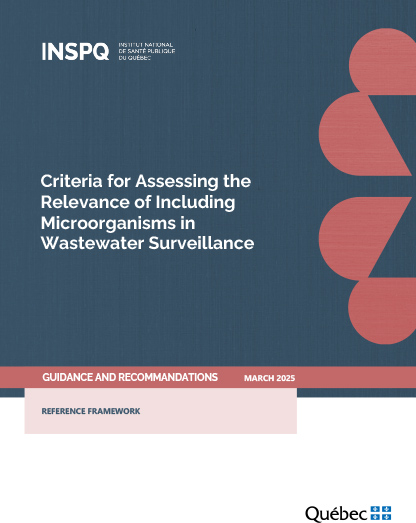Criteria for Assessing the Relevance of Including Microorganisms in Wastewater Surveillance
Key messages
- A wide range of pathogens can be detected in wastewater. Wastewater surveillance can therefore be a valuable tool for public health.
- Various initiatives have been launched in several countries to prioritize and assess the inclusion of pathogens in wastewater surveillance, led by both public health organizations and academic researchers.
- This reference framework aims to define guiding principles and evaluation criteria for including infectious agents in the development of wastewater surveillance programs. It draws on expertise gained since the launch of Québec’s wastewater surveillance program in March 2021, as well as insights from similar initiatives.
- The decision to include a microorganism must be based on the specific surveillance objectives to ensure that the information collected effectively supports public health decision-making.
- The identified evaluation criteria take into account:
- Whether the microorganism should be included in the exercise, according to:
- Its detectability in wastewater;
- Its public health significance according to the epidemiological situation;
- Feasibility and the capacity to obtain quality data from wastewater samples;
- The usefulness and added value of wastewater surveillance data in decision-making;
- Ease of implementation and supportive contextual factors.
- Whether the microorganism should be included in the exercise, according to:
- The weight assigned to each evaluation criterion can be adjusted according to its relevance to the objectives and the available level of evidence.
- The reference framework can be used in different contexts, according to the desired scope of the approach and available resources, i.e.:
- An ad-hoc need concerning a specific pathogen;
- Regular evaluation of the targets included in a program;
- Short-term prioritization of a limited number of infectious microorganisms for which surveillance can be easily deployed (e.g., pathogens monitored by other jurisdictions);
- Long-term planning in program development.


